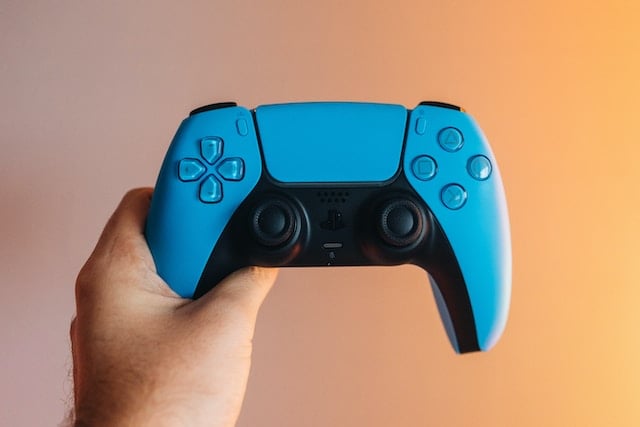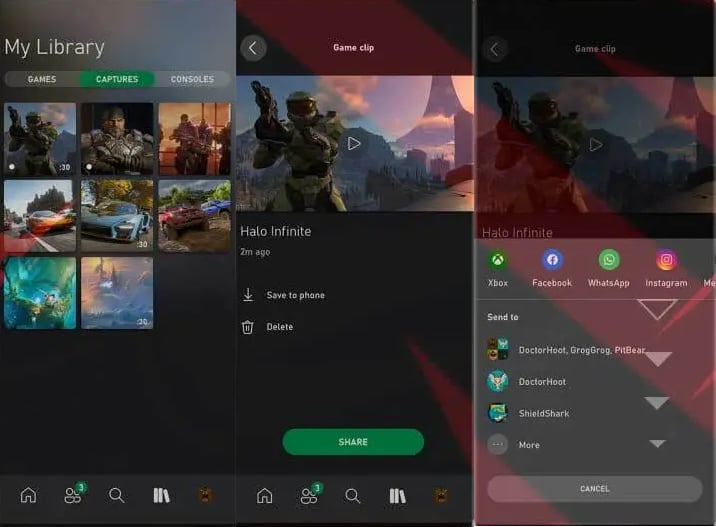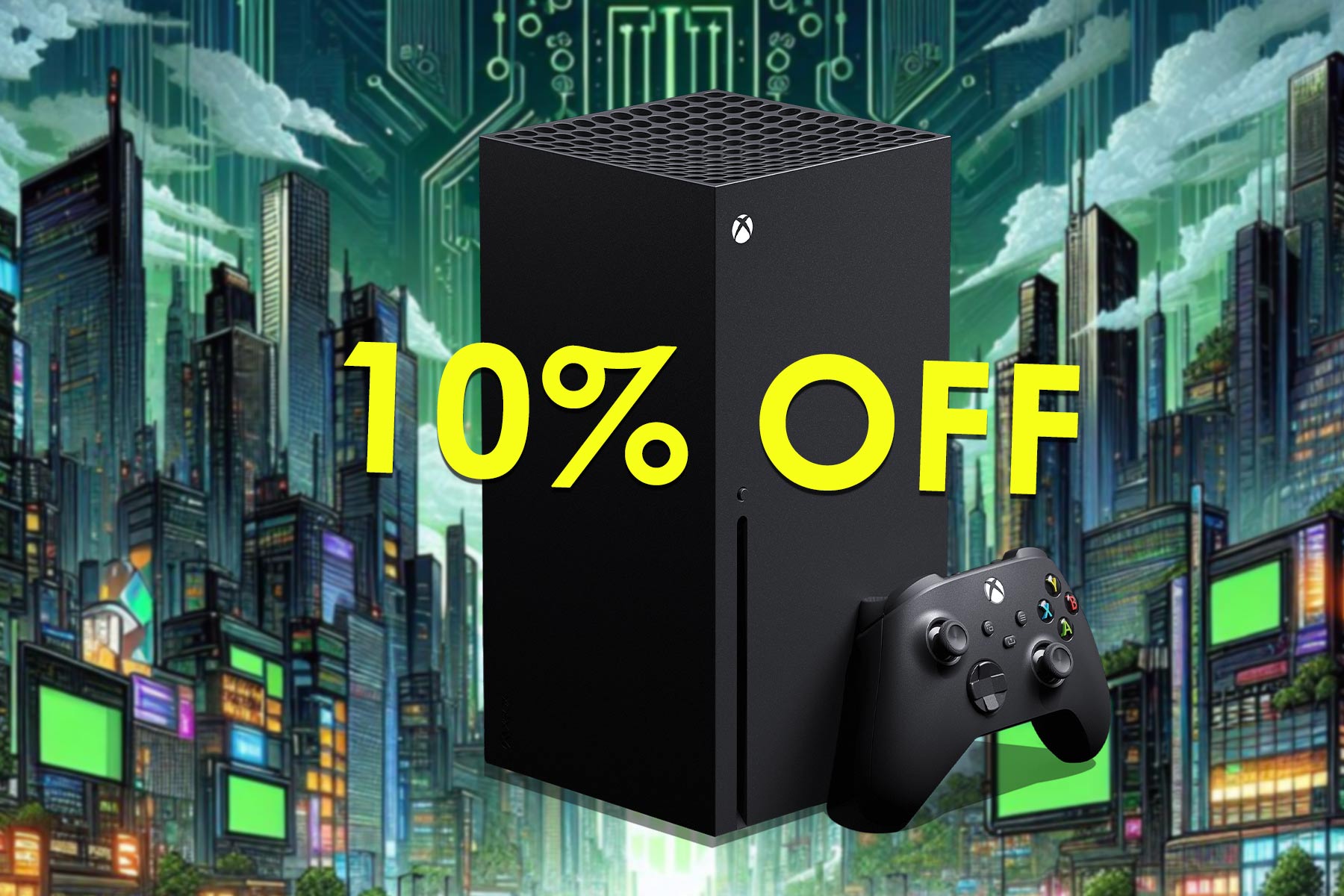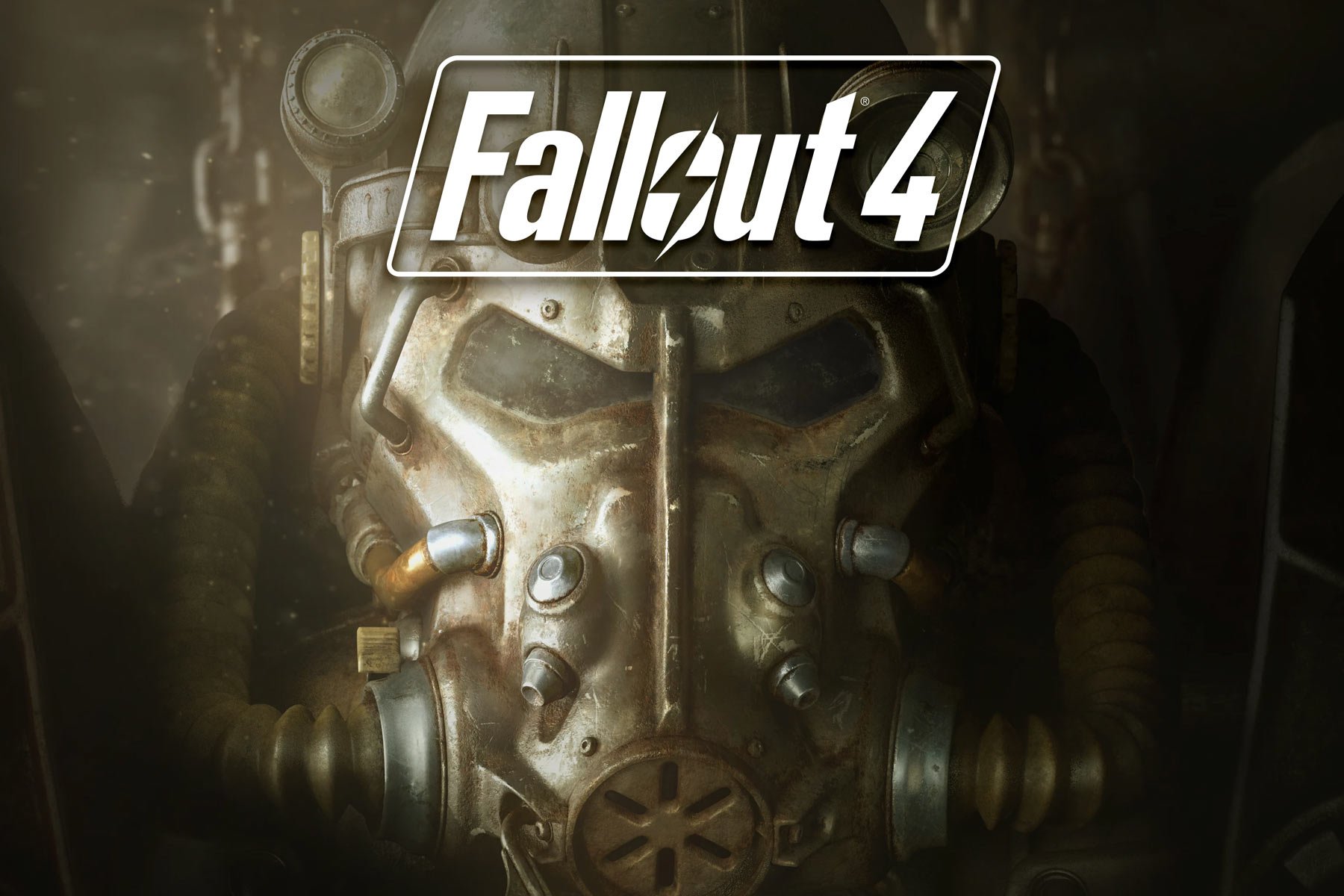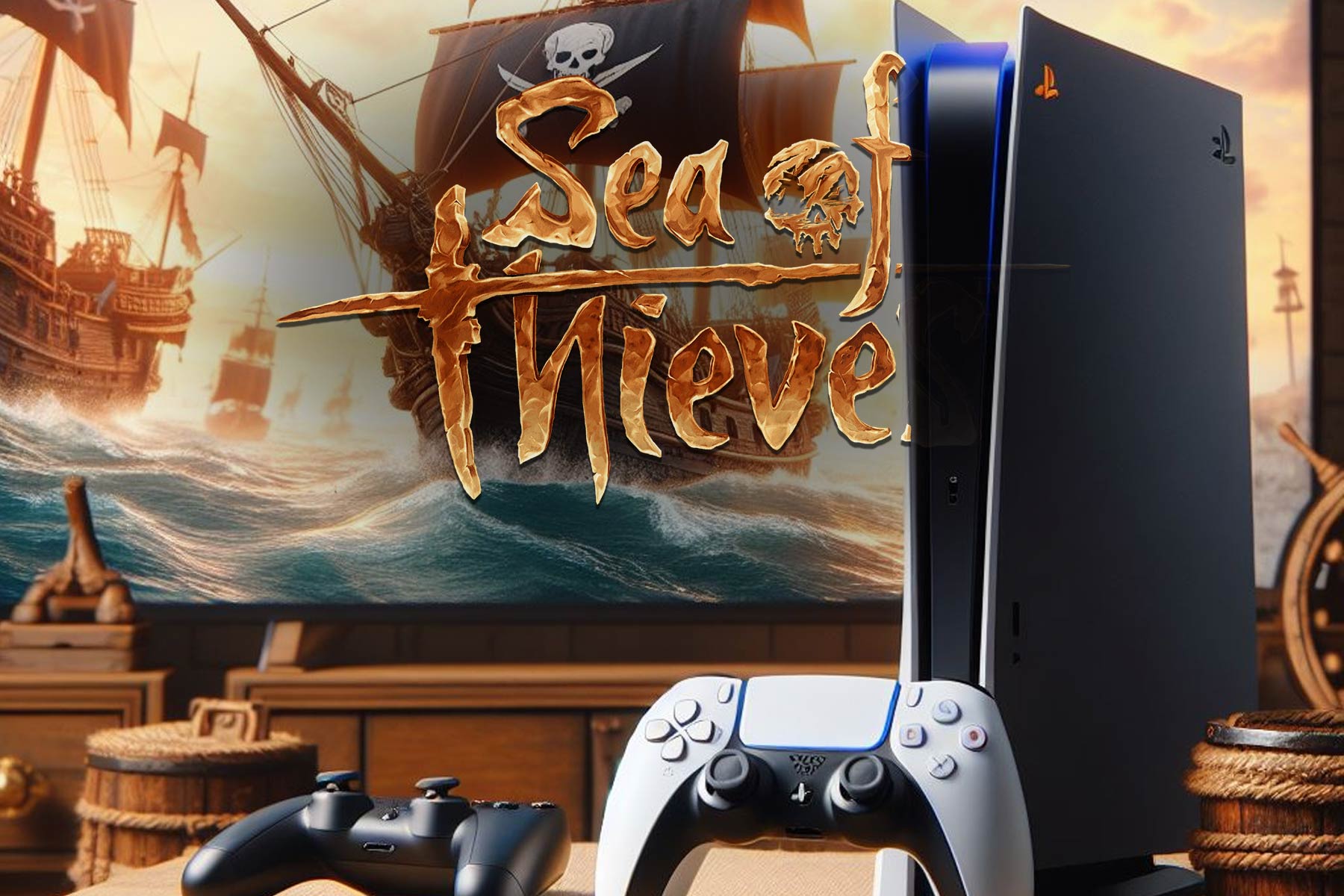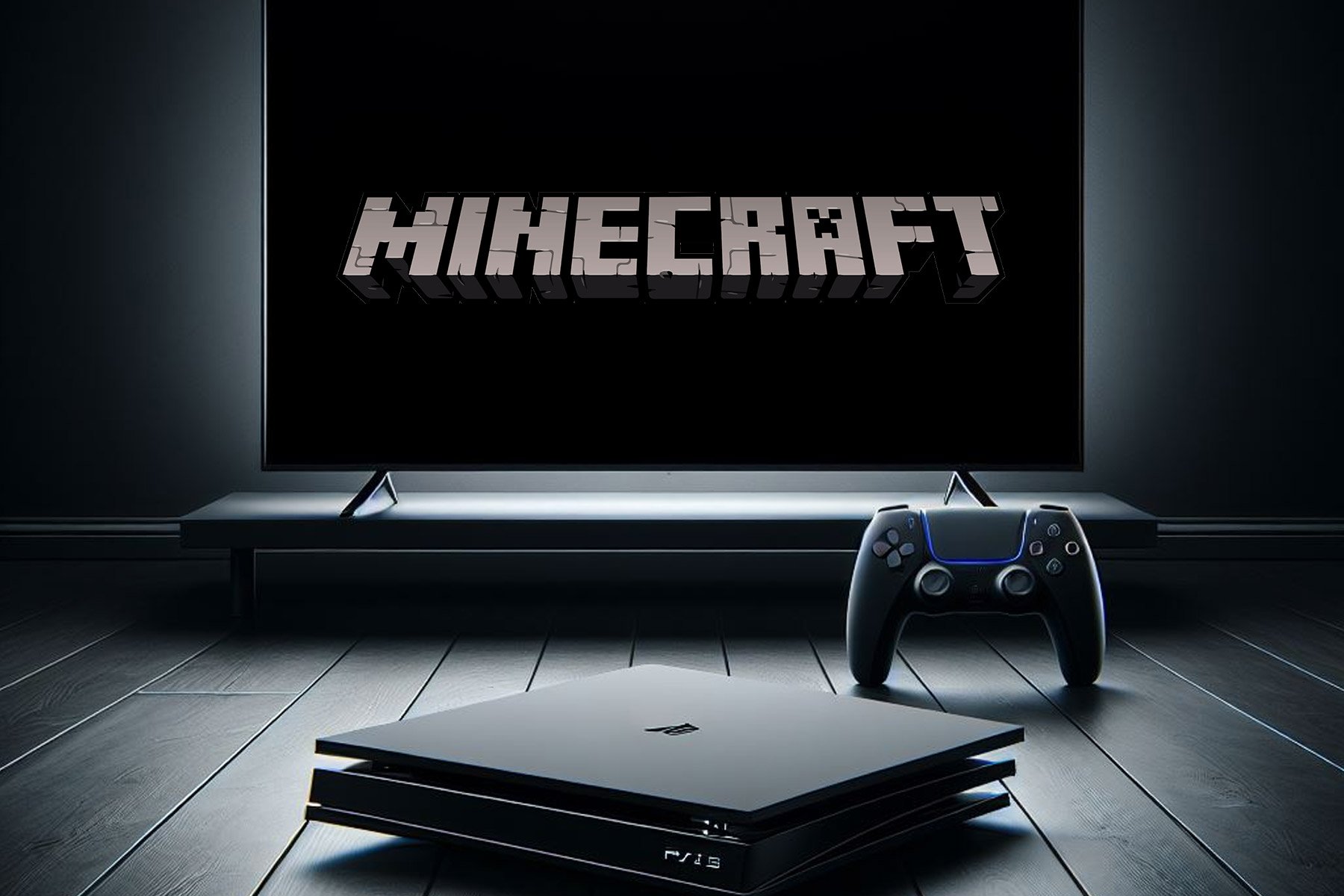Xbox Series S vs PS5: In-depth Feature Comparison
PlayStation 5 or Xbox Series S, which one is better?
19 min. read
Updated on
Read our disclosure page to find out how can you help Windows Report sustain the editorial team Read more
Key notes
- Xbox Series S and PS5 are the leading consoles on the gaming market, but which one is better?
- PS5 has more hardware power, while Series S is more compact and affordable.
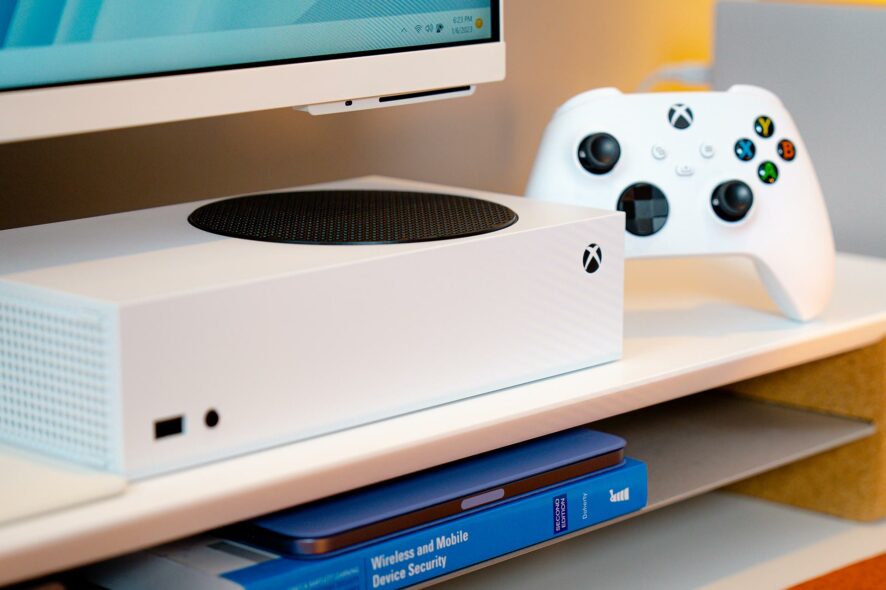
Xbox Series S vs PS5 debate has been going on for a while, and many gamers are discussing which is the better gaming device for them.
Xbox Series S and PS5 belong to the ninth generation of video game consoles, and they are the dominating gaming platforms on the market.
In fact, we have a great guide that answers whether you should buy an Xbox Series S.
Picking the right one isn’t always easy, and in this guide, we’re going to take a closer look at both systems, check their features, and show you which is the better choice for you.
Xbox Series S vs PS 5: Price
The price difference comes from different hardware. PS5 offers better hardware and performance, and it has an optical drive, which will result in less use of storage space.
Thanks to the optical drive, you can even play DVDs and BluRay discs on the console. The hardware and performance differences are why PS5 is more expensive, and in our option, the PS5 justifies its cost.
Xbox Series S vs PS 5: Physical Comparison
| Xbox Series S | PlayStation 5 | |
| Dimensions | 6.5cm x 15.1cm x 27.5cm | 39cm x 26cm x 10.4cm |
| Weight | 4.25lbs | 9.3lbs |
PlayStation 5 is larger in size, and it weighs twice more than Xbox Series S, so it might not be the best choice if you’re running low on space.
Light indicators
It’s important to mention light indicators on both consoles. Xbox Series S is more minimalistic in this regard, and it has a single light indicator showing your console’s state.
If the indicator is blinking, it means there’s an issue with the device.
On the other hand, PS5 uses ambient lights that change color depending on the state. While this looks great in the dark, it can be a bit confusing to some users.
This is especially true if the console is waking up in rest mode or powering up. In case of an error, the white light will blink, but in some cases, you might get a blinking blue or solid blue light when an error occurs.
While PlayStation 5 light indicators are more vivid, they can be a bit confusing sometimes, so we prefer the minimalistic and straightforward approach that Series S uses.
Customization options
As for customization, both consoles support skins that you can add to your console, but PS5 also has official faceplates, so you can change the color of your console. However, there are many third-party faceplates available as well.

If you’re into customization, then PS5 might be a better option for you.
Xbox Series S vs PS 5: Performance & Graphics
First, let’s take a quick look at the hardware specs of both consoles:
| Xbox Series S | PS5 | |
| CPU | 8x Cores @ 3.8 GHz (3.66 GHz w/ SMT) Custom Zen 2 CPU | 8x Cores @ 3.8 GHz (3.66 GHz w/ SMT) Custom Zen 2 CPU |
| GPU | 4 TFLOPS, 20 CUs @ 1.55 GHz Custom RDNA 2 | 10.28 TFLOPs, 36CUs @ 2.23GHz |
| Memory | 10 GB GDDR6 | 16 GB GDDR6/ 256-bit |
| Memory bandwidth | 224GB/s | 448GB/s |
| Storage space | 512GB NVME SSD | 825 GB SSD |
| Optical drive | Not available | 4K UHD Blu-ray Drive |
| Max resolution | Up to 1440p at 120 FPS | 4K at 60 FPS, up to 120 FPS |
Both consoles share an identical CPU and but there’s a difference in the GPU department. Series S 4 teraflops while PS5 has 10.28.
Regarding the CUs, there are 20 on Series S and 36 on PS5. Regarding the frequency, GPU on Xbox runs at 1.55GHz while PS5 GPU runs at 2.23GHz.
Differences between the hardware affect the resolution and frame rates directly, and Series S supports up to 1440p resolution at 120FPS. On the other hand, PS5 can handle 4K resolution at 60FPS, and it can even go up to 120FPS.
Loading speed differences and Quick Resume
Regarding loading speed, PS5 can be up to 2 times faster depending on the game. This is because SSD bandwidth and Series S can achieve 2.4GB/sec while PS5 can reach up to 5GB/sec.
Bottom line, PS5 offers twice more bandwidth than Series S, and it loads twice faster.
Xbox Series S uses a feature called Quick Resume to combat this limitation. This allows you to switch between games seamlessly. The feature supports up to 3 save states, allowing you to switch between 3 games.
This is perfect if you play multiple games since you don’t have to wait for the game to load again when switching between games.
The PS5 doesn’t have this feature, so it’s impossible to switch between games seamlessly, but on the other hand, PS5 games load twice as fast, which makes switching relatively fast.
However, we can’t stress enough how convenient this feature is, and we wish PlayStation had something similar to offer.
Ray tracing and Performance Mode
Ray tracing is available on both consoles, but the hardware power is the deciding factor. Series S has a weaker GPU with fewer teraflops and CUs, meaning that Ray tracing is more taxing on your performance.
Simply put, Series S hardware is too weak to handle this feature, and if you choose to use it, you can expect a framerate of around 30fps.
On the other hand, PlayStation 5 has much more powerful hardware that can handle Ray tracing better. Regarding performance, PS5 can handle Ray tracing at 60fps for most games, but some will drop to 30fps while using this feature.

Both consoles have a performance mode feature that adjusts, lowers your graphics settings, and lets you run games at a higher framerate.
Visual changes are noticeable since the resolution will be lowered, and features such as Ray tracing will be turned off.
This means you’ll run games at 1080p at 120fps on Series S and 1440p at 60-120fps on PS5. Without performance mode, you can achieve maximum resolution and quality at the cost of framerate.
For Series S, you’ll get about 30fps, while for PS5, that’s 60fps which is a noticeable difference.
Xbox Series S vs PS 5: Hardware Comparison
Both consoles have 3D audio, and PS5 comes with Tempest 3D, which lets you experience immersive audio with any pair of headphones.
An additional AMD GPU powers this feature compute unit located in the console, which improves the audio quality and performance.
On the other hand, Microsoft has its own Spatial Sound that does the same, but if you want to boost the audio quality and use Dolby Atmos or DTS X, you’ll need to purchase a license.
Storage space and expansion
As for the storage, Series S comes with 512GB SSD, while PS5 has 825GB. It’s important to mention the speed difference, and PS5 is twice faster with a 5GB/sec read speed.
Not only that PS5 has more space, but also has twice faster load times. Since Series S doesn’t have an optical drive, you might soon run out of internal storage on it, so you’ll need to look at expansion options.
The storage space can be expanded on both consoles, and Series S allows you to add additional storage simply by connecting the expansion card to the slot on the console. It’s simple and it only takes a few seconds to do so.
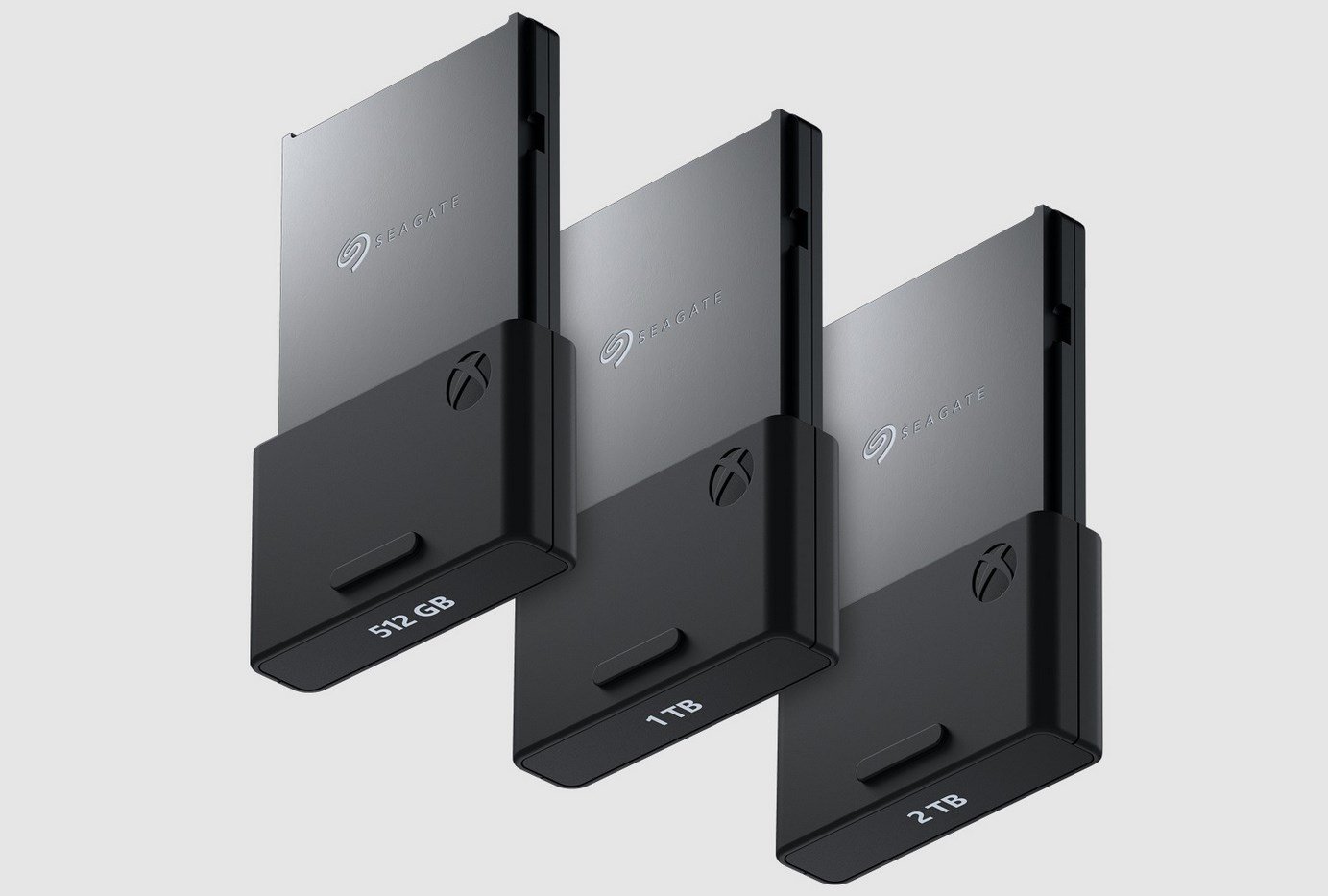
Regarding the PS5, the expansion process is more complex, and you need to open the PS5 case, remove the NVMe cover, insert the expansion drive, fasten it, and close the PS5 case.
This process can take a couple of minutes and requires some practical knowledge. Of course, both consoles support external storage in the form of external hard drives or SSDs, and you can connect them easily via USB, but the loading speeds will differ if using this option.
Regarding expansion, Series S is a clear winner with its straightforward approach.
VR support
One of the biggest differences between the two is the VR support. Series S is a traditional console that allows you to enjoy your games on the screen.
However, PS5 has VR support, and it works surprisingly well, with many users praising how immersive it is. Although we’re not a fan of VR, the technology is here to stay, so if you want to try the latest gaming technologies, PS5 is the way to go.
Controller differences
In terms of controllers, the PS5 controller is slightly more expensive, and it comes only in the wireless version, while Series S offers both wired and wireless versions alike.
As for design, both controllers are ergonomic, and if you’re familiar with the design of the previous versions, you won’t have any issues adjusting to the new one.
In terms of features, PS5 offers a built-in microphone that can come in handy during online matches. In addition, the PS5 controller has haptic feedback which feels more immersive.
Speaking of immersion, adaptive triggers on PS5 can also make your gaming sessions more immersive. Lastly, the built-in trackpad can be used for quick navigation if you choose to use it.
In terms of features, the PS5 controller is superior in every way, but the Xbox controller is more affordable and offers better compatibility with PC out of the box.
Noise level and heating
Regarding the noise, we have to mention that both consoles are pretty quiet, but PS5 might be a bit louder, especially when using a disc drive.
Since Series S comes without a disc drive, it will be almost completely silent during the gaming sessions.
As for heating, both devices can get quite hot, but Series S is unlikely to overheat. The same can’t be said for PS5. This is somewhat expected since it has more hardware power, and thus it’s generating more heat.
Overheating issues aren’t common, but they can happen; however, they are usually caused by dust buildup that can be easily fixed.
Physical media support
The biggest difference between Series S and PS5 is the lack of an optical drive. This means that on Series S, you can only play digital edition games.
While this is handy, it comes with a few drawbacks. Most notably, storage space, and if you planning to have dozens of games installed, you’ll soon run out of storage space on your console.
In addition, if you’re on a slower connection, downloading a game might take a while.
On the other side, PS5 lets you install the game from the disc and that makes the whole process a lot faster.
It’s worth mentioning that PS5 can also work as a multimedia player, so it will play DVDs and Blu-Ray discs without issues.
Keep in mind that if you install the game using the optical drive, you still have to insert it into the console, which is less convenient than running it from the storage drive.
Benefits of disc drives
Region locking isn’t an issue on PS5, and the games should work even if the console and the game aren’t from the same region. However, there might be some issues while doing that.
One benefit of disc games is that you own the game, and you can share it with others or resell it if you want to. Unfortunately, that’s not the case with digital edition games; if the game is removed from the server, you’ll lose access to it.
Another benefit of discs is that you can buy used games and still play them on your console without any limitations. It’s also worth mentioning that disc games can be cheaper, so that is another benefit of physical copies.
Console updates frequency and quality
Both consoles are getting frequent system updates, and usually, Series S updates come without any issues.
Regarding PS5, one update from a few months ago caused freezing on the console, but Sony quickly addressed it.
Few users also experienced System Update Something went wrong on PS5, but that’s a minor issue that can be easily fixed.
Both consoles will automatically download system updates, but there’s always an option of downloading updates manually.
Second screen experiences:
Both consoles have companion apps and support streaming to both PC and mobile.
Using the companion apps, you can stay in touch with your friends, chat, share clips, or watch their gaming sessions.
You can also use these apps to control your console remotely. This feature can be useful since it allows you to start a download remotely or to set up your console for a gaming session while away.
Of course, remote play is another major benefit that lets you play away from your TV.
Xbox Series S vs PS 5: Gaming Experience
Both devices support remote play, and while it works pretty well, there are still some issues to look out for.
Latency is an issue, but it can be reduced with a wired connection and a high-quality Wi-Fi router. Do keep in mind that even with a proper network setup, you still might experience some latency.
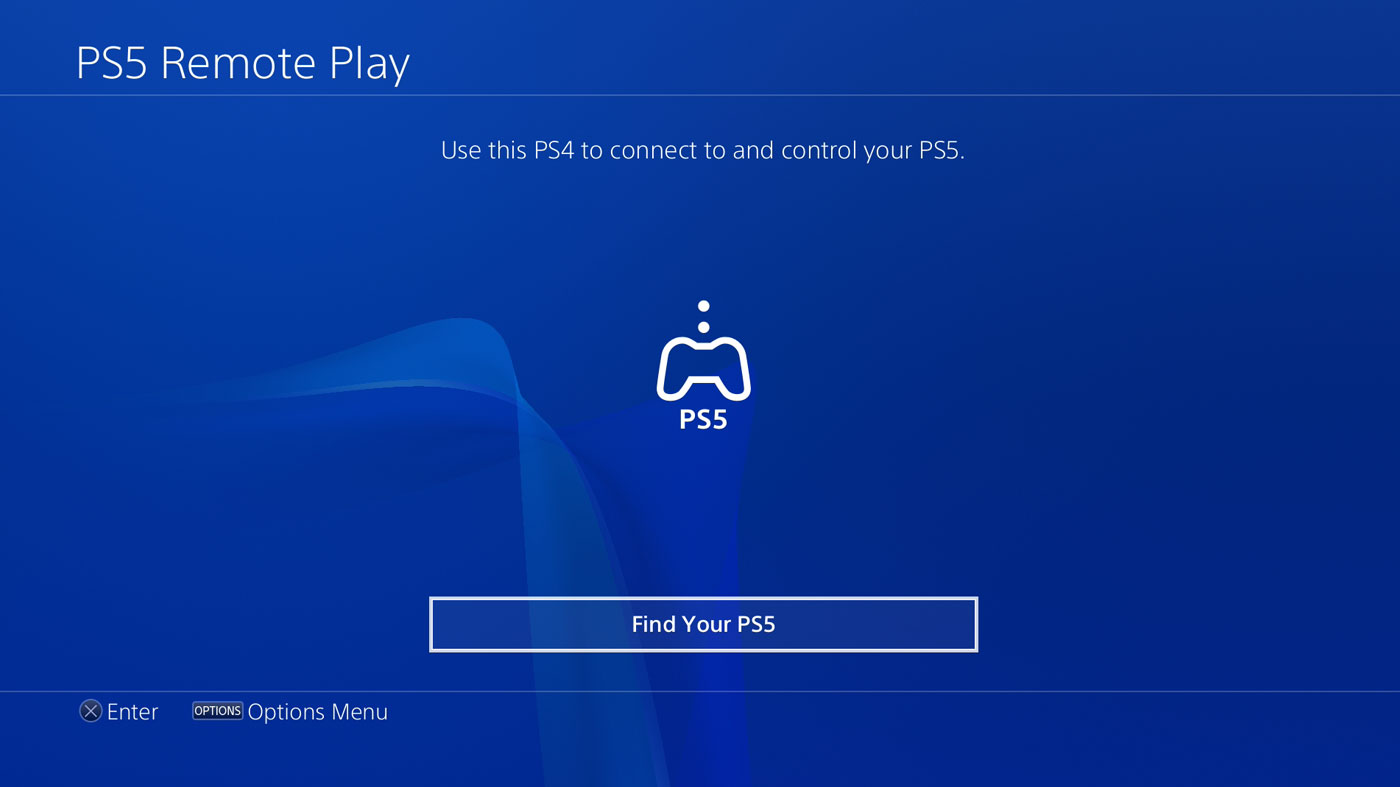
This isn’t an issue for single-player games or less action-oriented titles, but it can be a major issue in multiplayer games.
In case you plan to use this feature outside of your home network, be prepared to deal with higher latency. The feature works great on both systems, but it works better on a wired connection, so keep that in mind.
Speaking of games, Quake remaster for PS5 and Xbox Series S/X is here, so you can play it regardless of the console you own.
Game library differences
Regarding the game library, PlayStation 5 has about 560 games available. On the other hand, Series S has 397 titles.
In terms of games, in our humble opinion PlayStation platform always had better exclusive games. Currently, there are 12 exclusives for PS, and some of them include:
- Deamon’s Souls
- Final Fantasy VII Remake Intergrade
- Gran Turismo 7
- Gran Turismo 7
- Horizon Forbidden West
- Ratchet & Clank: Rift Apart
- Spider-Man: Miles Morales
This isn’t all, and we expect new and exciting exclusives to come on PS5 this year as well.
As for Series S, it only has the following exclusives:
- Forza Horizon 5
- Halo Infinite
- Microsoft Flight Simulator
As you can see, PS5 has more exclusives, but if you’re a fan of the Forza, Halo, or Gears series, then Series S might be a better choice for you.
Xbox Game Pass and PlayStation Now
Both consoles offer digital libraries and subscriptions. Xbox Game Pass offers about 465 digital edition games in total and it gives its users up to 20% discount on selected games.
The subscription comes with an Xbox Live Gold membership as well as an EA Play subscription. However, the best option is the day-one pass for titles from Xbox Game Studios and Bethesda Softworks.
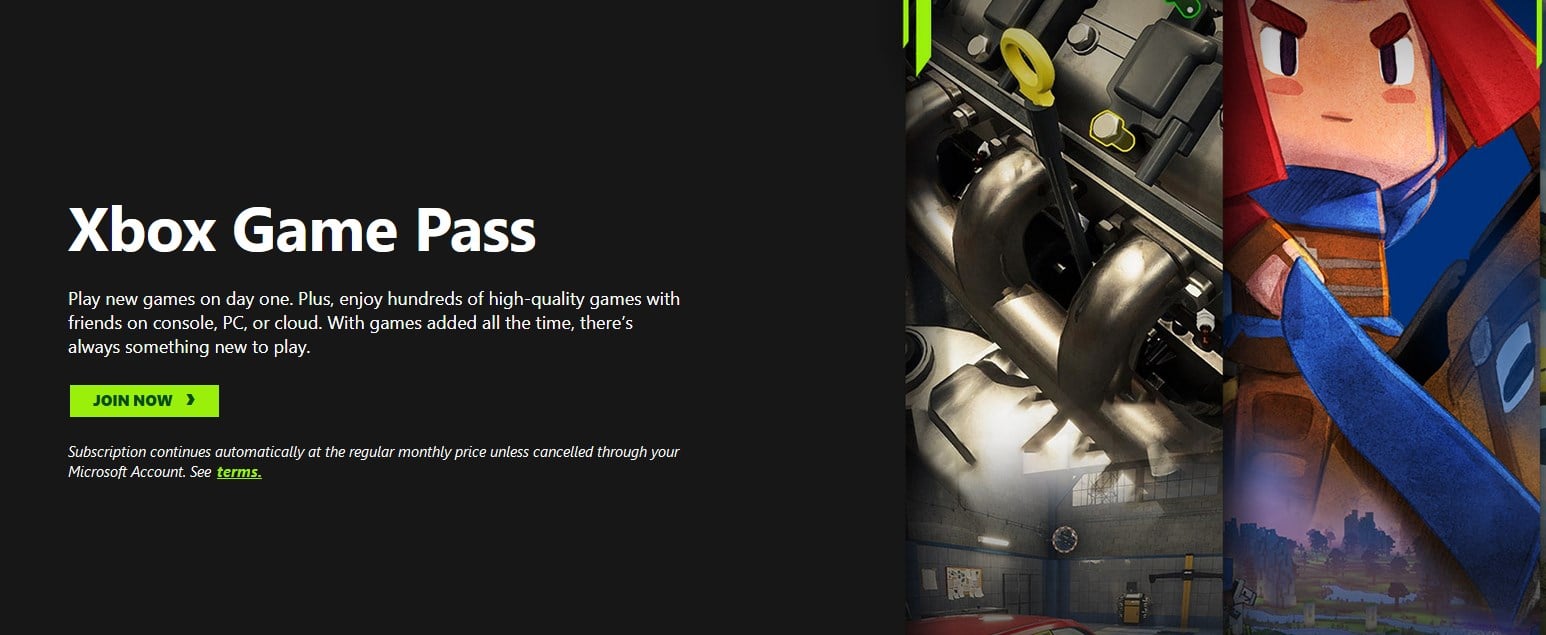
On the other hand, PlayStation Plus offers similar features, while allowing you access to the extensive game catalog as well.
The service offers special discounts and special access to Ubisoft+ Classics. One major difference is that Sony usually doesn’t allow day-one access to its games while Xbox Game Pass does.
So even though Sony might have a larger library of games, the lack of day-one access to certain games might drive away some gamers.
Backward compatibility
Backward compatibility is a huge part of both consoles, and we’re pleased to inform you that PS5 is compatible with PS4 games. This means that you can access more than 4000+ PS4 titles on your console, according to Sony.
While this sounds impressive, Series S does a step beyond. Not only is Series S compatible with Xbox One games, but it also works with Xbox 360 games. It can even run some original Xbox games as well.
Both consoles support disc games and digital games, but while PS5 supports only the last generation of games, Series S supports games from the last three generations.
So if you own older games or you want to play some older games on a single console, Series S is a clear winner here.
Game updates and installation
Both systems offer automatic updates for games, so all your games will be seamlessly updated in the background.
The installation process differs, and since Series S comes without an optical drive, all games must be downloaded from the Internet. This is pretty straightforward, but it also means that users with slower connections will have to wait while their games are downloaded.
PS5, on the other hand, supports disc installation, so no Internet connection is required for this process. This is perfect if you’re not using a fast or reliable network connection and don’t want to wait hours to download a game.
Upcoming exclusives
As for upcoming games, systems share a similar library of games, but there are some exclusives to look for. For PS5, the upcoming games are the following:
- Final Fantasy 16
- Marvel’s Spider-Man 2
- Fairgames
- Little Devil Inside
- Rise of the Ronin
As for Xbox exclusives, the offer is rather limited, but thanks to the Xbox Game Pass, you can get day-one access to upcoming titles such as Starfield.
Lastly, we have to mention Microsoft’s xCloud gaming service. This service is available to the Xbox Game Pass Ultimate subscriptions, allowing you to stream Xbox Series X/S, Xbox One, Xbox 360, and original Xbox games via the cloud.
This means you can enjoy these games on your phone, PC, Chromebook, or any other device with Internet access. This is an exciting feature, but unfortunately, Sony doesn’t have anything similar to offer to its users.
It’s worth mentioning that some games support crossplay, and speaking of which, we have a great guide on how to crossplay Overwatch, so be sure to check it out.
PS5 Vs Xbox Series S: Convenience Features
When it comes to startup, we have to say that Series S is a clear winner here. The console started fully in just 18 seconds, while the PS5 took 23 seconds.
As for the rest mode, it takes just 3 seconds for Series S to start, compared to 13 seconds for PS5.
While this isn’t a huge difference, Xbox Series S is faster when it comes to powering on or waking up, and if you want to quickly power on your console and get right in the action, Xbox is a better choice.
Interface and accessories
The interface on both consoles is simple and easy to use, and Series S UI is similar to the previous generation’s.
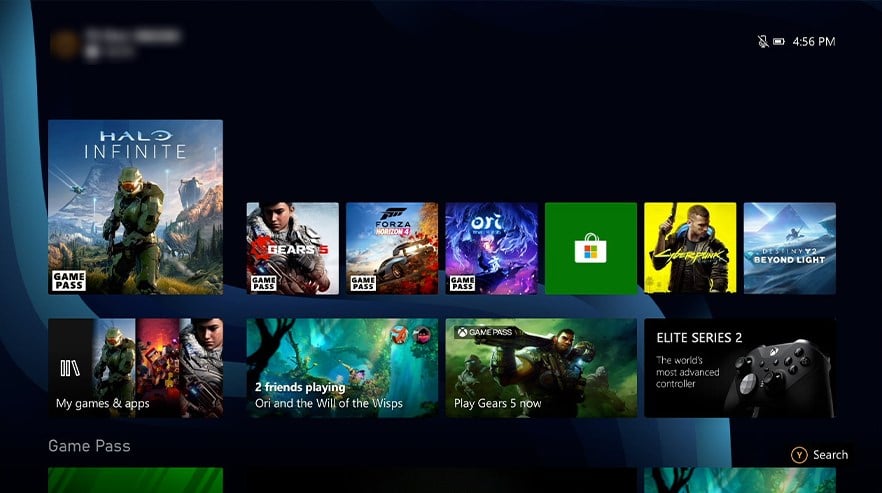
Sony, on the other hand, revamped its UI, and the new version comes with a control center that will pause the game and bring you access to the various features.
While the Xbox interface looks more uniform, Sony’s is more exciting, but in the end, both are easy to use and navigate.
As for the sounds, both consoles have unique system sounds, and it all comes down to personal preference.
In terms of accessories, PS5 comes with the following:
- PlayStation 5 console
- Wireless controller
- HDMI cable
- AC power cable
- USB-A to USB-C cable
- Console stand
On the other hand, Series S comes with the following:
- Xbox Series S console
- Xbox wireless controller
- Two AA batteries
- HDMI cable
- Power cord
Both consoles come with all the necessary equipment but the PS5 comes with USB-A to USB-C cable that can be used for accessories.
Portability and smart home integration
Regarding portability, Series S is smaller in size and twice as light, so it can be easily transported. Plus, you don’t have to carry any discs with it to play.
On the other hand, PS5 is a bulkier device, it comes with a stand, it’s heavier, and you need to carry discs if you want to play certain games. In this regard, Series S is a clear winner.
If you’re a fan of smart homes, we must mention that Series S offers great built-in support for both Alexa and Google Assistant, so you can use them to control smart devices in your home via voice.
Unfortunately, PS5 doesn’t support this feature natively, but it can be enabled with some tinkering. So if you’re not technically inclined, Series S is a better choice for home automation.
Parental control and accessibility features
Both consoles offer parental controls, and you can use them to restrict the following:
- Limit the playtime
- Limit spending
- Filter the content that the child can see
- Prevent the child from accessing certain features
The key difference is that you can make all these restrictions from the console or from the dedicated app in the case of Series S. As for PS5, you can put restrictions by using your web browser.
Both consoles have accessibility features, and when it comes to PS5, you can find the following:
- Text size adjustment
- Zooming
- High contrast
- Invert colors
- Color correction
- Auto-scroll speed
- Motion reduction
- Mono audio for headphones
- Screen reader in 14 different languages
- Closed captions
- Custom button assignment
- Vibration intensity settings
- Trigger effect intensity
- Voice chat conversion to text
- Text to speech
On Series S, you can find the following:
- Copilot feature
- Custom button mapping
- Mouse and keyboard support
- Magnifier
- High contrast
- Color filters
- Speech to text
- Voice commands
- Narrator
- Closed captions
- Mono output
- Ability to mute navigation or notification sounds
Overall, both consoles offer great accessibility features, but we wish that PS5 had the Copilot feature like Series S.
Both consoles have standby modes, and they allow you to do the following:
- Play games remotely
- Keep games suspended
- Install games or updates remotely
- Charge the controller
PS5 Vs Xbox Series S: Beyond Gaming
Sony takes carbon emissions seriously, and according to research, PS5 produces 0.022kg of CO2 per hour of use.
As for energy usage, Series S used only 0.05kWh, while PS5 used 0.077kWh. This is expected since Series S doesn’t have as powerful hardware.
On the other hand, Microsoft is determined to lower energy consumption, and the console is set to run updates only when the grid is running on renewable energy.
In addition, the Shutdown mode is now the default option on Xbox since it saves the most energy.
Recyclability and resale value
Regarding recyclability, the Series S is made from post-consumer recycled resin, a substance made from recycled plastic. As controllers, they are also using 30% PRC resins for external housing and 50% for their internal components.
On the other hand, PS5 might not be as environment-friendly, but its packaging is fully recyclable, according to Sony.
Lastly, let’s talk about resale value. PS5 comes with physical games, so you can always sell the console and the games separately.
That’s not the case with Series S since all your games are tied to your personal account, so even if you sell the console, the buyer will have to purchase the games and add them to their account manually.
Conclusion
Overall, PS5 and Series S both have their advantages. PS5 offers better hardware, better resolution, better performance, and exclusives, and that’s all thanks to the superior hardware.
On the other hand, Series S is much more affordable, it offers superior backward compatibility, but it doesn’t have a disc drive, so your only option is to download the games to play them.
It’s worth mentioning that Xbox Series S/X got restocked recently, so it’s also easier to get.
Xbox Game Pass does offer better features, in our opinion, with first-day access, and that’s something we wish PS5 Console had as well.
Overall, both consoles are great, and they will provide you countless hours of intense gaming action.
Before you leave, why not check our guide on Xbox vs PlayStation all-time sales to learn more?

